Search Results for Tag: UIAA
Biogas from Everest faeces
There are things that stink to high heaven – quite literally. For example, if up to 1000 climbers, high altitude porters, cooks, kitchen helpers and other staff relieve themselves for two months during the spring season in the base camp on the Nepalese south side of Mount Everest. The number of 12,000 kilograms of faeces has been reported for years, which seems to me rather low. The removal of the human waste from Everest Base Camp has been regulated for a long time, in contrast to the faecal problem in the high camps. The excrements from the toilet tents of the expeditions are collected in barrels and carried downwards by so-called “shit porters” – until 2014 without exception to Gorak Shep, the next small settlement, located about five kilometers from the base camp, now also further down the valley. There the faeces have been tipped into pits thus posing a great danger to the drinking water. The International Climbing and Moutaineering Association (UIAA) has now awarded an environmental protection project which could make an important contribution to tackling the problem.
![]() read more
read more
Japanese climbers land a coup on Shispare
Put the eight-thousander glasses aside! At an insignificantly lower mountain in the west of the Karakoram in Pakistan, two Japanese climbers succeeded an extraordinary ascent on 22 August. According to the International Climbing and Mountaineering Federation (UIAA), Kazuya Hiraide and Kenro Nakajima climbed for the first time via the Northeast Face of the 7611-meter-high Shispare. In four days, the two Japanese climbed in Alpine style through the 2700-meter-high wall to the summit and descended via the Northeast Ridge, it said.
![]() read more
read more
UIAA chief Frits Vrijlandt: Five questions, five answers
The Netherlands are called so for good reason. The highest “summit”, the Vaalserberg near the town of Aachen, is only 323 meters high. Nevertheless you find “Oranje boven” also on the highest mountains on earth. Frits Vrijlandt is not a blank slate in the climbing scene. In 2000, he was the first Dutchman to climb Mount Everest from the Tibetan north side, later he became the second mountaineer from the Netherlands who scaled the Seven Summits, the highest mountains of all continents. At the International Mountain Summit (IMS) in Bressanone in South Tyrol, the General Assembly of the International Climbing and Mountaineering Federation (UIAA) was held – and Vrijlandt was reelected as President for another four years.
Frits, a man from such a flat country is the head of all climbers worldwide. That sounds a bit strange.
![]() read more
read more
UIAA supports stricter rules on Everest
Backing for the Nepalese authorities: The International Climbing and Mountaineering Federation (UIAA) “fully supports the decision to propose more stringent measures for climbers wishing to scale the world’s highest peak, Mount Everest (29,029ft / 8,848m)”, as it said. These measures will include individuals having to prove they have already scaled a peak higher than 6,500 meters, thus eliminating the possibility of novice climbers scaling the mountain. “Everest should become a mountaineers’ mountain again”, said UIAA president Frits Vrijlandt.
![]() read more
read more
The litany of the (Everest) ladder
A ladder at the Hillary Step? This story just won’t die. Last spring, a member of the Nepalese government had given a tip to some journalists that there were considerations in Kathmandu about this subject. After this year’s General Assembly of the International Climbing and Mountaineering Federation (UIAA) at Flaggstaff in the USA a few days ago, the issue was item 1 of the final news release. “As one of the most iconic landmarks of the world, Mount Everest belongs to all of mankind”, the UIAA statement reads. “Thus, the ascent of this magnificent mountain should be reserved to those who acquired the skills and the experience needed to reach the highest point of the world.”
![]() read more
read more
Well under drugs is half way up?
 Mountaineering is a sport. And there is – as in other sports – doping. Not the fact is surprising but the extent. “It is common practice,” German Professor Thomas Kuepper tells me. The occupational health and sport physician is working at the University Hospital Aachen. He was one of the authors of the report “Drug use and misuse in mountaineering”, which has been discussed at the General Assembly of the World Federation of Mountaineering and Climbing (UIAA) last week in Flaggstaff in the United States. Kuepper refers to an own study on Kilimanjaro: 80 percent of the summit aspirants used Diamox or Dexamethasone.
Mountaineering is a sport. And there is – as in other sports – doping. Not the fact is surprising but the extent. “It is common practice,” German Professor Thomas Kuepper tells me. The occupational health and sport physician is working at the University Hospital Aachen. He was one of the authors of the report “Drug use and misuse in mountaineering”, which has been discussed at the General Assembly of the World Federation of Mountaineering and Climbing (UIAA) last week in Flaggstaff in the United States. Kuepper refers to an own study on Kilimanjaro: 80 percent of the summit aspirants used Diamox or Dexamethasone.
![]() read more
read more
The tedious topic of ladder
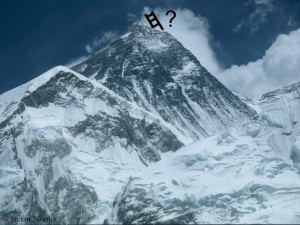 A news does not necessarily become more true by repeating it again and again. There are reports in many German newspapers that ladders should be fixed at the Hillary Step, the key point of the normal route on the Nepalese side of Mount Everest, to prevent traffic jams. This has been producing headlines like “Nepal makes climbing Everest easier”. Let us look at the facts: Mohan Krishna Sapkota, spokesman of the Ministry of Tourism in Kathmandu, has told a journalist of a news agency that there were considerations to fix ladders at the Hillary Step. He didn’t say when it should happen. All this is not new.
A news does not necessarily become more true by repeating it again and again. There are reports in many German newspapers that ladders should be fixed at the Hillary Step, the key point of the normal route on the Nepalese side of Mount Everest, to prevent traffic jams. This has been producing headlines like “Nepal makes climbing Everest easier”. Let us look at the facts: Mohan Krishna Sapkota, spokesman of the Ministry of Tourism in Kathmandu, has told a journalist of a news agency that there were considerations to fix ladders at the Hillary Step. He didn’t say when it should happen. All this is not new.
![]() read more
read more
No decision yet on “new” 8000ers
Nepal has to be patient for about one more year. At its general assembly in Pontresina in Switzerland the International Mountaineering and Climbing Federation (UIAA) has not yet decided whether it will recognize additional 8000-meter-peaks or not. According to the Nepal Mountaineering Association a UIAA commission had named six side peaks that could be accepted as prominent peaks with a unique identification: Kanchenjunga West-Peak (alias Yalung Kang, 8505 m), Central-Peak (8473 m) and South-Peak (8476 m), Lhotse Central-Peak (8410 m) and Shar (8382 m), Broad Peak Central (8011 m). “Both Nepal and China Mountaineering Association delegates welcome and fully support the UIAA initiation”, Nepalese Ang Tshering Sherpa, Honorary member of UIAA, wrote to me after his return from Switzerland. “Also Pakistan Alpine Club and Indian Mountaineering Foundation delegates were very positive but need more time to get approval from their association’s annual general meeting which will be held end of Dec 2013 or January 2014.”
![]() read more
read more



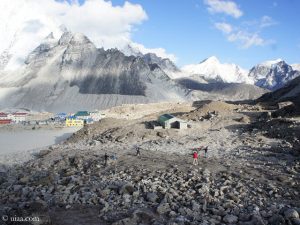

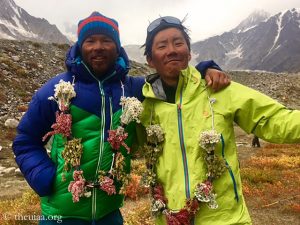
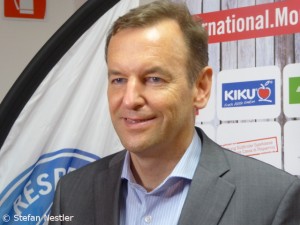
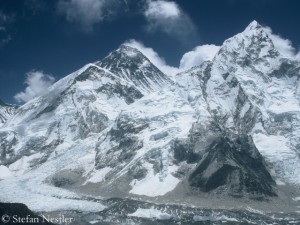
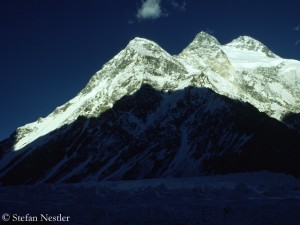

Feedback